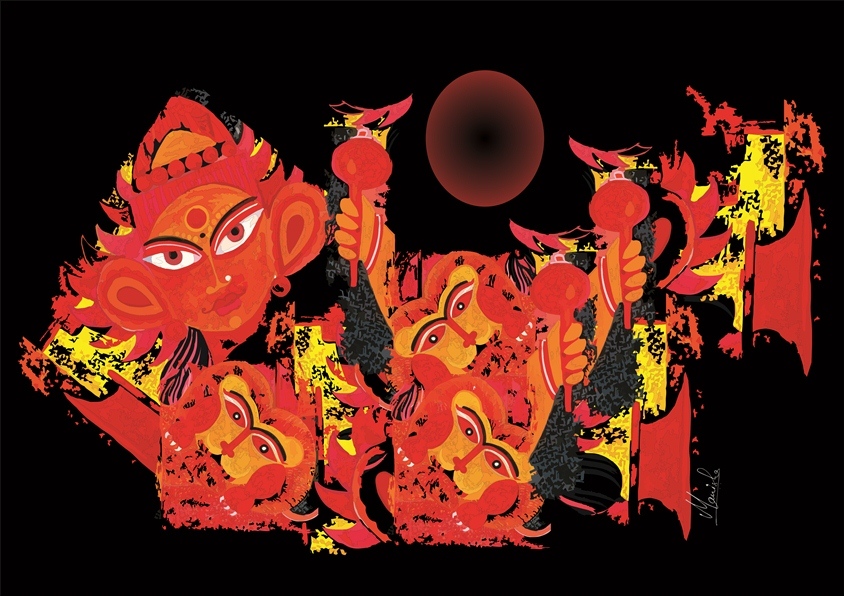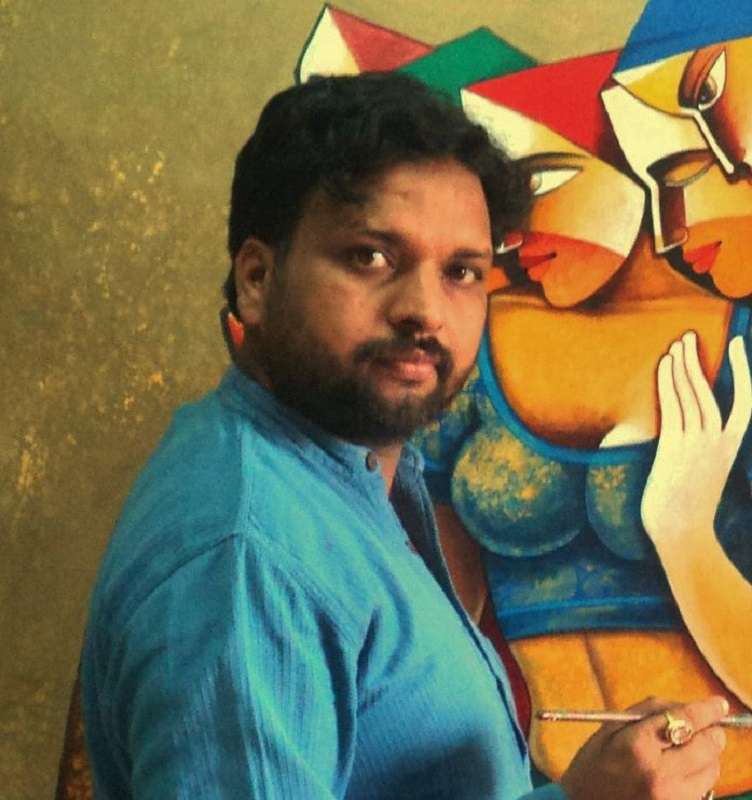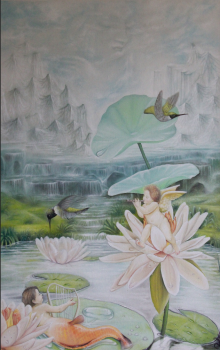
If you are a believer of Hinduism and have an interest in Indian art, then you must have noticed that Goddess Durga is worshiped in many forms like Durga painting, sculptures, and idols. Offerings to Shiva and Vishnu include food, flowers, leaves, lamps and incense. The aim is to invoke God, who is otherwise dormant. Offerings to Durga are strikingly different. Besides the standard offerings to God, there is always something more: haldi (turmeric), kumkum (vermillion powder), kajal (kohl), and pieces of cloth to serve as her upper garment – the choli (blouse), the chunari (veil), the lehenga, (skirt) and the chadar (shawl). The aim is to cover up the Goddess so that she is less Kali and more Gauri, or in other words, she is less wild and more domesticated. Let us see why this is the case.
This makes sense if we associate the male form of divinity with the mind and the female form of divinity with nature. When we offer prayers to Gods and Goddesses, we want to invoke the mind as well as domesticated nature. Only invoking the mind (God) without domesticating nature (Goddess) is the trait of Lord Shiva, the withdrawn hermit. Only domesticating nature without invoking the mind, is the trait of Lord Brahma, one who manifests as Daksha, the controlling priest. The tension between the mind and nature is a key theme of the Puranas. And so, the preferred form of the Goddess is the one that is shown in Durga painting as riding a lion, defying domestication. Her unbound hair reveals that she is still wild like Kali, but her nose ring reveals she is domesticated like Gauri. The weapons of destruction in her multiple hands divulge a different kind of violence –one that is restrained unlike Kali’s, one that offers protection, but can also be used to punish. She is Brahma’s defiant daughter, Vishnu’s protected and protective sister and Shiva’s affectionate wife. Her affection cannot be taken for granted. She will not be exploited. Domestication of the Goddess (nature) must be mirrored with the awakening of God (mind.)
We all have seen Durga painting where the Goddess is depicted as a virgin girl or Kanya-kumari. There is a very interesting and very popular story revolving around Kanya-kumari that defies the very idea or concept of domestication in order to establish a culture.
Once, a young girl- Kanya-kumari invoked Lord Shiva and conveyed her desire to be his wife. Shiva agreed, but the Gods were not happy with this news. It was believed that as long as Kanya-kumari was unmarried, she had the unique power to kill demons and also, that her power unused in marriage and motherhood will also avert the sea from overpowering the land. So, the Gods went out of their way to disturb this wedding. They told Kanya-kumari that to make sure that the marriage is a happy one she has to marry Shiva at sunrise the next day. As Shiva lived far away in the north on Mount Kailash, he was asked to set forth immediately and travel through the night. Shiva agreed to travel and started the long journey. Kanya-kumari spent the night preparing for the wedding. She adorned herself with cosmetics and jewelry. In the middle of the night, the Gods transformed into roosters and started to crow. Shiva thought that the sun was about to rise and that he would not make it to the wedding on time. So he turned around, disappointed. When the sun really did rise, there was no sign of Shiva. A heartbroken Kanya-kumari broke all the vessels containing the wedding feast. The pulses and grains thus spilled turned into the colorful sand that one finds near the southern beach of India. She washed away her cosmetics in the sea and that is why the sea is multi-colored there. She stood on the southern tip, killed demons and prevented the sea from overwhelming the land. It is believed that even today she, like a divine beckon, enables the fisherman to battle tempestuous sea and come home safe.
This story displays an ambiguous relationship with domestication. At one level, we want God to be domesticated and at another level, we do not want the Goddess to be completely domesticated. The form of Durga that we see in Durga painting is an embodiment of this wish of mankind.





















